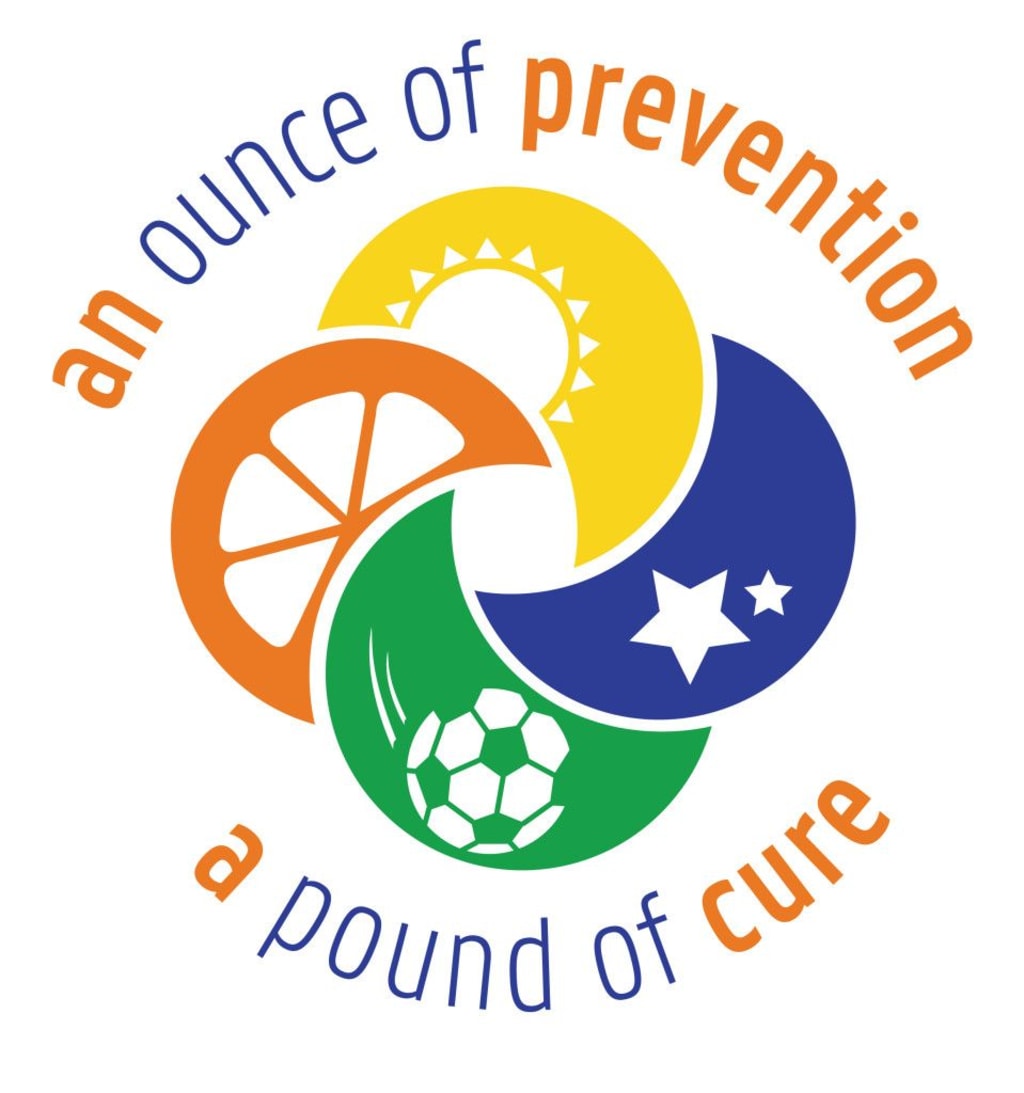
Childhood obesity is becoming a national epidemic. In the United States, an average of 1 in every 3 children between the ages of 2-19 are overweight or obese. This puts them at great risk for many serious health issues, like Type II diabetes, high blood pressure, asthma, or even heart failure. These are illnesses that children should not develop at such young ages.
What is childhood obesity? Obesity is defined as being “grossly overweight.” The guidelines for childhood obesity is based on BMI (body mass index). Body mass index is a weight to height ratio. If a child’s BMI is at or above the 95th percentile of the age group, they are considered to be obese. If their BMI is at or above the 85th percentile but below the 95th percentile for their age group, they are to be considered obese.
Childhood obesity can lead to many serious health conditions such as type II diabetes. If diabetes goes undetected and/or untreated, this can be life-threatening. If a child is carrying extra weight and is inactive, this can cause the respiratory tract to react negatively, causing asthma symptoms. Heart failure can be caused by obesity, as well. This is so scary. A child that is overweight has a heart that struggles to keep up due to the excess weight that they are carrying around with them. These are major health concerns for children with childhood obesity. There are many other conditions that overweight children can experience. Joint and muscle pain can be present in an overweight child. Knees and feet are susceptible to pain due to a child carrying the extra weight. Not just negative physical conditions can be present in a child that is overweight. Children may have low self-esteem and feel bad about themselves. Perhaps they are being bullied or picked on at school due to this or not being able to run as fast or play sports as well as their classmates. The emotional scars can be just as real as the health conditions but they are not as easily seen.
Childhood obesity is on the rise today. There are many speculations about this. One thought of a big cause for childhood obesity is the rise of television and media sources. Families today have 100’s of channels in their homes. Add the internet and social media and it’s an accident waiting to happen for children that are susceptible to the addicting behaviors of the growing technology. Why would they need to go outside to hang out with their friends when they can text and chat with everyone that they want to, without leaving the couch? Video games are a cause of obesity as well. If kids are not made to go outside and are allowed to run and ride a bike in a video game, they will never WANT to go outside for real exercise. Also, television is a big influence on behavior for kids. The advertisements for unhealthy foods are made to be extremely appealing to young children. Marketing takes full advantage of the younger generation. They know when to play the commercials that will attract young minds. Then, it’s their hopes that those same kids will ask or beg their parents for that unhealthy food, such as sugary cereals. Cereals. That’s a huge unhealthy commercial trigger. Loaded with sugar, carbs, calories, and cute little mascots. Healthy food marketing is rare. If it exists, most of the time, the commercials or advertisements are boring and don't scream delicious and fun to the children watching. Why would they want a food that looks stupid? Stupid probably is associated with disgusting.
Eating habits and physical activity or lack of are not the only causes for childhood obesity. Genetics and metabolism also play a big role in this epidemic. Metabolism is how your body changes the food that you consume into the energy that your body receives from this food. If your metabolism is fast then you will most likely burn your food faster than someone with a slower metabolism. Therefore, you will probably be thinner than the child with the slower metabolism.
The community that a child lives in can play a role in the rate of obesity in a child. If a family lives in an unsafe or inner-city neighborhood, the child’s parents may not want them to play outside unattended and that limits their physical activity time as well. So, while children that live in safe neighborhoods are outside playing and running after school and during the summer, other children that live in unsafe communities are inside all summer while their parents work. For some children, the only physical activity they get is in physical education class and recess. It really is a terrible thing. Growing children need activities along with socialization. This helps them all around. Their weight, their minds, and their hearts. Physical Education for children also has guidelines to make sure that children are getting the proper physical activity that they need. Although this little bit that they get in school is not enough, it’s something. The US Department of Health and Human Services guidelines are that they recommend children ages 6-17 should have at least 60 minutes of physical activity per day. This does not need to be just one type of activity. It can be aerobics, moderate to vigorous at least 3 days per week, muscle and strength training at least 3 days per week, and bone strengthening at least 3 days per week. All physical activity should be age appropriate and enjoyable for children. They should not be made to do physical activity that they absolutely hate. They will begin to hate all physical activity.
Another cause of childhood obesity is sleep. If a child does not sleep well for any reason, it is hard for them to lose weight. That is how our body works. We need sleep to be healthy and be physically active and metabolize the food that we eat. Maybe a child’s parents are having some arguments late at night when they think that the children are asleep. This will not allow the child to sleep well and therefore, he/she may begin to gain weight and be “lazy." This is not their fault. Their body is rebelling against the lack of sleep.
Many households today have very limited incomes. Health foods, such as fresh fruits and vegetables, are expensive. It’s difficult for families on a limited budget to be able to afford healthy eating habits for their growing families. Also, kids that are overweight and express an interest in extracurricular activities such as soccer or karate may feel that they can’t afford the prices. I’ve spoken to many people over the years that don’t understand this. Some people take for granted that they can afford these “luxuries” but not everyone can. Here is a hint, though: if your child wants to play a town-sponsored sport (maybe just try it to see if they like it) and it's more money than you can afford, you can approach the director and explain the situation. They will most likely knock the price or even waive it. They just want to give the kids an opportunity to play. I’ve done this. My oldest son wanted to play football. Actually, wanted to “try” football. It was an outrageous amount of money. I ended up only paying $50 for him to say, “Football is not for me.”
It is so important that we get our kids into a healthier lifestyle. Even children that are not obese or overweight may not be the healthiest inside. It's possible their bodies work differently than the body of an obese child and may not retain the weight and have a better metabolism. We need to find ways to be sure that we can feed our kid’s healthier foods. School lunches are thought to be healthy but they are not. They are balanced but not healthy. They are not low carb, low fat, low sugar, high protein foods. According to the New York State Education Department, “The National School Lunch Program is a federally assisted meal program operating in over 100,000 public and non-profit private schools and residential child care institutions. It provided nutritionally balanced, low cost or free lunches to more than 31 million children each school day in 2012.” They have standards that must be followed. This tells them how many servings of each food group must be served per each age category. However, even though these meals are “nutritionally balanced” does not make them calorically health and nutrient rich.
We as parents, and we as a community have an important job to do. We need to educate our children and be the parents that we should be and help our kids to know how to choose healthy over not healthy. We need to take the time to go for walks or bike rides with our kids, amd throw the ball around in the yard. If you don’t have a yard, jump around inside, play Wii sports on the Wii, and do some sit-ups on a rainy day. Be involved and make sure we are practicing what we preach. If a parent is overweight, their children are more than likely to be overweight. The children see that and they won’t strive to be different and the kids are most likely eating what the children are eating so how are they going to be any healthier than the parents?
We need more programs for low-income families to take advantage of for free and low-cost nutritious food. Farmers markets are amazing. They have many fresh fruits and vegetables available to purchase and they are usually in convenient locations. However, the prices are not always affordable. We need to work towards fixing this nationwide epidemic. Knowledge is power. Parents need to be educated. Some people have no clue what is healthy and what is not. Reading and understanding a label is not common knowledge. I think that elementary schools should have a program or a group run by the school nurse to teach children these skills. They should know that it’s a good skill to learn and that they are not alone. Of course, it would be voluntary but I am thinking that parents, especially parents of overweight children, will think it’s an excellent idea. Not all parents have this knowledge themselves so how can they teach their children?
Recently, my youngest son, who is 9, was put on a diet by his physician. He has been overweight for most of his life. Many times, I have tried to put him on a diet and was unsuccessful with it. He was not emotionally ready to meet the challenge and I ran into many roadblocks at home (husband not wanting to tell him “no”). We have overcome this challenge and began the “healthy eating lifestyle.” I am surprised at how well he is doing. I have taught him how to read labels and he knows what is good and what is not. For him, he was genetically doomed from birth. My family is overweight, including myself. However, I have changed my life and he sees it. He knows that this will benefit him when he gets older. He has joined soccer. Trust me, I know it’s hard. Soccer was not cheap but I mustered up all the money that I could to sign him up. He loves it. I see a difference already. He has his rough moments but that is so normal. If kids see that other people are like them want to be healthier, they will too.
Works Cited
http://www.cn.nysed.gov/content/meal-component-adjustments-short-and-long-weeks
http://www.obesity.org/obesity/resources/facts-about-obesity/childhood-overweight
http://www.obesityaction.org/understanding-obesity-in-children/what-is-childhood-obesity
https://www.cdc.gov/healthyschools/obesity/facts.htm





Comments
There are no comments for this story
Be the first to respond and start the conversation.